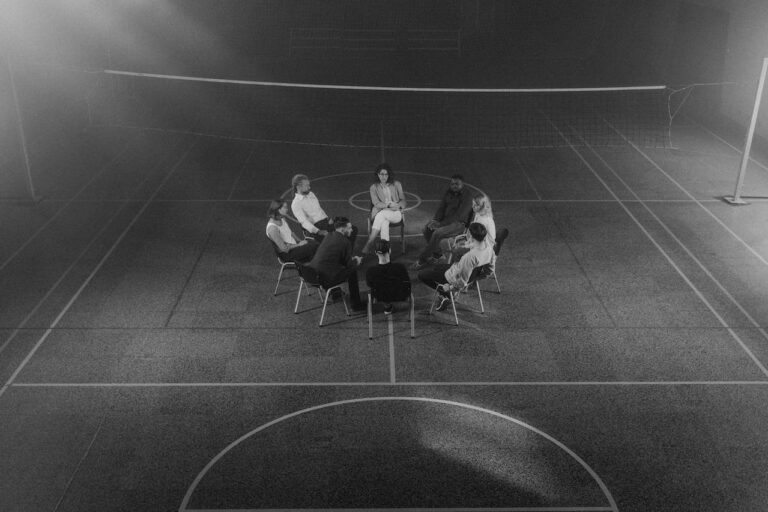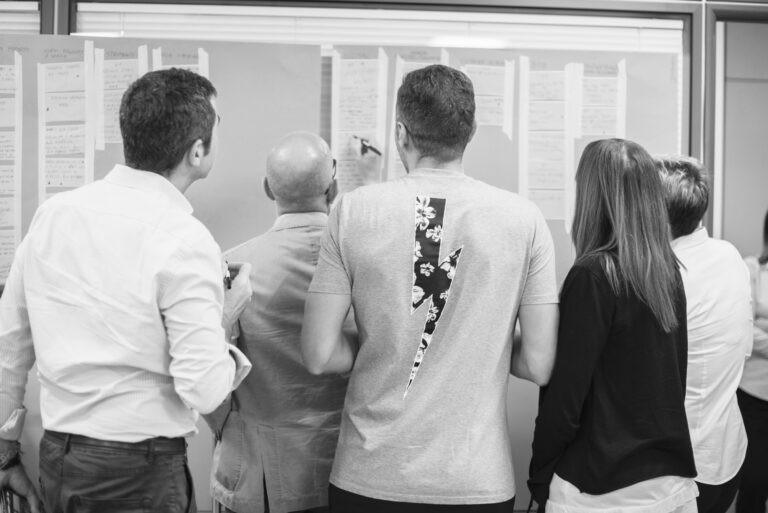Blind spots, those hidden areas of unawareness, exist within everyone. There is no exception, not even to most accomplished leaders. Blind spots are often rooted in personal biases, limited perspectives, or ingrained habits.
In the word of CliftonStrengths, they exist within our natural pattern of behavior.
The Nature of Blind Spots in Leadership
“Alex,” a C-level executive in a new fintech startup, possesses a high degree of Deliberative talent. He is careful and cautious. It’s an important talent in his industry where money trail often needs to be scrutinized. For a startup, this talent helps to prevent unnecessary risks affecting cash flow.
The Deliberative talent is an asset until time speaks otherwise.
Leaders with high Deliberative talent can become overly hesitant to take risks or make timely decisions, often lead to missed opportunities.
So how is this different from weaknesses?
Blind spots are not inherently negative traits or weaknesses. Rather, they are aspects of our natural pattern that can become a liability when overused or when we fail to recognize their limitations.
The keyword here is “natural pattern” — it is in you, and it dominates the way you act and behave. Weaknesses often do not stem from what’s natural in you. Some top psychologists would even argue that weaknesses often relate to skills, not a state of being. One thing for sure, weaknesses hinder you to perform efficiently and effectively at your job.
Can a blind spot become a weakness? Yes, and often does.
Alex dismisses a lot of opportunities because of their presumed risk. Sometimes, the opportunities retract themselves because others have pounced on them before Alex made a decision. His blind spot of being overly cautious has led to business stagnation. His weakness is a product of untamed blind spot.
Know Your Buttons Before Mapping Blind Spots
Let’s put aside blind spots for now and start from the very beginning — your natural state.
If you must write, edit, and re-write a script before a presentation, you may have high Intellection. If you always have a work nemesis (even if it’s only in your mind), you may have high Competition. If you perk up every time someone says, “let’s brainstorm,” you may have high Ideation.
All those actions, feelings and thoughts are products of patterns that we have. Our DNA defines them, our environment cultivates them.
Since 1999, CliftonStrengths (formerly Clifton StrengthsFinder) has mapped the Intellection, Competition, Ideation and 31 other items as “themes”.
Each of us has a combination of these themes. Your most dominant, your signature, is your Top 5. These are the ones that other people identify you with — the good and the bad.
The theory behind this assessment is simple. If you operate within what’s natural in you, your gain is more exponential.
The more natural your strengths are, the less likely that you’d notice it until someone points it out for you.
For you, you just do what you usually do. For others, the impact on them is direct.
Why Awareness Matters to Combat Blind Spots
“It’s not fair to me! He keeps on pestering me about hitting the target, but he can’t make any f****** decisions. He’s so slow, Dahlia!”
It’s not rare to hear my coachees voiced out their frustrations like “Irene”. The palpable tension between expectation and reality often finds its roots in a leader’s blind spots.
Awareness of these hidden zones is not just beneficial; it is crucial for effective leadership and harmonious team dynamics. Many studies have even suggested that self-awareness is a far more powerful leadership tool than having an MBA.
Irene, with her dominant Activator strength, epitomizes the essence of momentum and action. Her natural inclination is to transform thoughts into immediate action, to initiate projects with vigor, and to inject urgency into every endeavor.
However, when juxtaposed with Alex’s methodical Deliberative approach, this strength can be a source of friction. Irene’s frustration escalates as she perceives Alex to be slow-moving, even stagnating.
The disparity in their working styles is stark: where Irene sees an opportunity for swift advancement, Alex sees potential pitfalls that warrant a careful, calculated analysis.
You, the leader, are responsible to ensure that you are working with your team, not against them.
Leaders without insight into their blind spots may unknowingly sabotage their own efforts.
Dahlia Sutrisno
Just as Alex could inadvertently stall his startup’s growth, leaders without insight into their blind spots may unknowingly sabotage their own efforts—and those of their team.
It is by peering into the mirror of self-awareness that one can begin to differentiate between the helpful and the hindering aspects of their natural patterns.
Awareness shines light on the subtle nuances of daily interactions and strategic decisions, ensuring that strengths are not misapplied as weaknesses.
Leaders who engage in regular self-examination are better equipped to navigate the complexities of their roles with agility and foresight.
Moreover, awareness fosters a culture of empathy and understanding.
By recognizing their own blind spots, leaders are more likely to appreciate the diverse strengths and challenges of their team members. This appreciation creates an environment where constructive feedback is not just given but sought after, and where personal growth is not just encouraged but celebrated.

Three Ways to Start Fostering Self-Awareness
The journey of fostering self-awareness is paramount. It is through this inner exploration that we can begin to discern the contours of our blind spots and, in turn, refine our approach to leadership.
Embark on Reflective Practices
Start with introspection. Dedicate time for thoughtful reflection, perhaps through journaling or meditation.
These practices offer a pause from the hustle of daily responsibilities, granting you the space to contemplate your actions, decisions, and their impacts.
Consider questions like, “What recurring challenges do I face?” or “When do I feel most frustrated with my team?”
Seek Constructive Feedback
While self-reflection is invaluable, external perspectives are equally crucial. Engage in candid conversations with trusted colleagues, mentors, or a coach. Request specific feedback on instances where your leadership might have faltered or where a situation didn’t unfold as expected.
The key is to listen actively and resist the urge to justify your actions; the goal here is to understand, not to defend.
Utilize CliftonStrengths for Deeper Insight
CliftonStrengths does more than inventory your strengths; it provides a lens through which to view your habitual patterns of thought, feeling, and behavior may harbor your blind spots.
Remember, blind spots thrive on what’s natural to you.
When you read your CliftonStrengths’ report for the first time, focus on your Top 5. Reflect on how these strengths manifest in your leadership style.
Do you lean heavily on your Strategic thinking, potentially overlooking the input of others? Or does your Maximizer theme sometimes push your team too hard towards perfection?
With each strength, ponder its dual nature. When does it serve you well? When might it become a liability? Recognizing the fine line between the two can pinpoint where a strength, overemphasized, transforms into a blind spot.
Pair your CliftonStrengths insights with the reflective practices mentioned earlier. As you journal or meditate, align your revelations with your dominant themes. Over time, patterns will emerge, offering clarity on the natural talents that might be overplayed and become stumbling blocks.
When engaging in feedback sessions, encourage your peers to frame their observations around your CliftonStrengths themes. This not only makes the feedback more digestible but also more actionable, as it relates directly to your innate tendencies.
Embracing the Journey to Enlightened Leadership
The path to enlightened leadership is an ongoing expedition of self-discovery. It is a process that demands courage, commitment, and a willingness to confront the uncomfortable.
Blind spots are inherent in everyone, and while they may not be weaknesses per se, they can certainly morph into them if left unchecked.
The crux of effective leadership lies in the ability to acknowledge these hidden areas and to actively seek out and embrace the insights that both self-reflection and external feedback provide.
In harnessing tools like CliftonStrengths, leaders can gain a clearer perspective on the natural patterns that govern their behavior and the potential blind spots that accompany each strength. By balancing introspection with candid feedback and aligning both with an understanding of their core strengths, leaders can ensure that their natural tendencies are channeled constructively.
The journey towards self-awareness is not one to be walked alone; it is enriched by the shared experiences and perspectives of those around us. As leaders cultivate this awareness and encourage the same in their teams, they foster an environment where growth is mutual, and success is collective.




